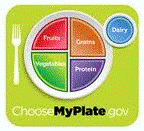Nutrition and Health Sciences, Department of

Department of Nutrition and Health Sciences: Dissertations, Theses, and Student Research
Date of this Version
8-2015
Document Type
Thesis
Citation
Godfrey, K. The effectiveness of educational displays related to foodborne illness in infants. University of Nebraska-Lincoln. 2015; 1-82.
Abstract
Infants under one year of age are at high risk and have the highest incidence of foodborne illnesses. The majority of infants receive infant formula before the age of one. Powdered infant formula (PIF) is not sterile, and if not prepared or handled appropriately, may cause foodborne illness. Researchers suggest that the majority of mothers do not receive information regarding safe handling of infant formula, and many do not use recommended procedures when preparing formula. The study objective was to develop and evaluate four display concepts to educate parents on the FDA/CDC recommendation to dispose PIF after two hours at room temperature. Five focus groups were conducted (n=24) to evaluate display effectiveness. All participants had a child under one year. Quantitative data included a demographic survey, knowledge survey, display evaluation form, and rank order form. The knowledge survey was completed before and after viewing all the displays to evaluate the comprehension of the information and whether participants gained knowledge from the content. Descriptive statistics and t-test were conducted. Quantitative results indicate that parents of infants were not knowledgeable about the increased risk of foodborne illness with use of PIF; PIF is not sterile and contains germs (Salmonella and E. coli) that could cause illness; and prepared PIF must be disposed after 2 hours when held at room temperature. Qualitative data was collected via focus group discussions focused on comprehension, acceptability, persuasiveness, and attractiveness of the displays. Data was transcribed and themes determined. Qualitative data elucidated key features of display effectiveness: title that captures attention; concise and easy to understand message; simple, large, dark font; graphics that appeal to parents, evoke emotion, and are racially diverse; simple and cohesive design with soft/warm colors. A final display was developed from the quantitative and qualitative results. Results suggest that parents of infants are not well informed of safe food handling of PIF and effective displays can be used to convey messages to parents on these topics.
Advisor: Julie Albrecht


Comments
A thesis Presented to the Faculty of The Graduate College at the University of Nebraska In Partial Fulfillment of Requirements For the Degree of Master of Science, Major: Nutrition and Health Sciences, Under the Supervision of Professor Julie Albrecht. Lincoln, Nebraska: August, 2015
Copyright (c) 2015 Krista Godfrey